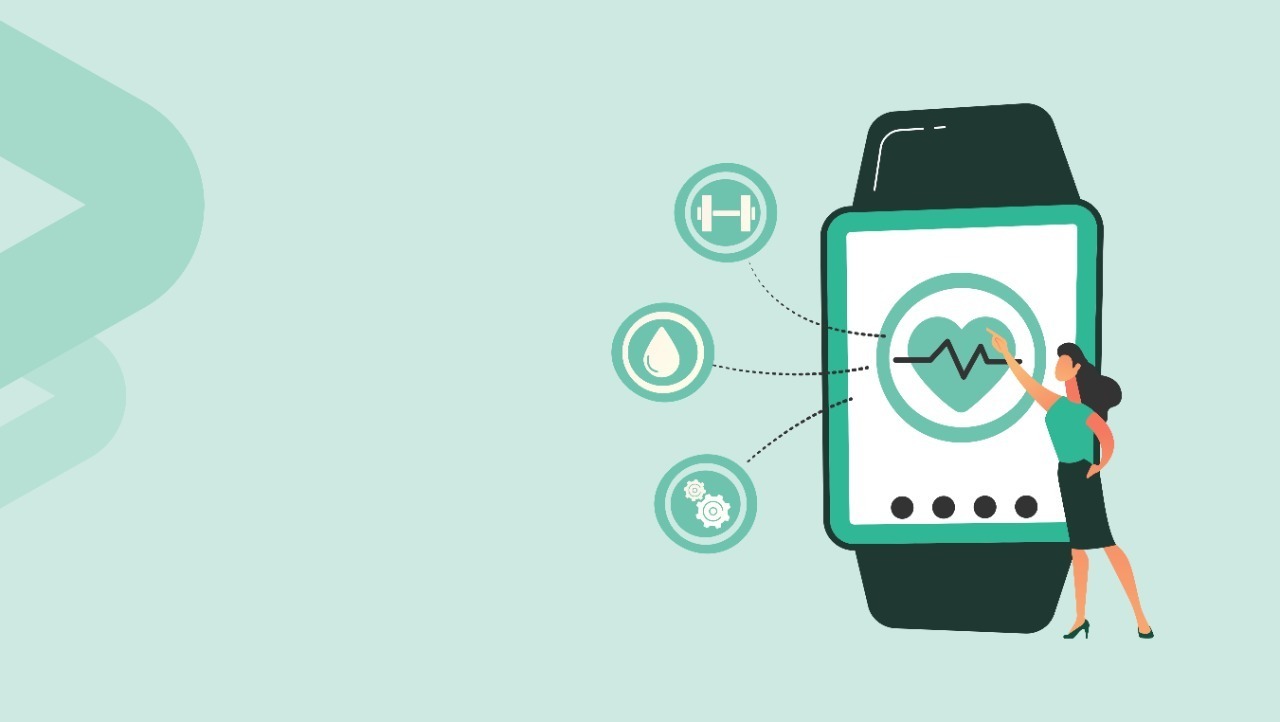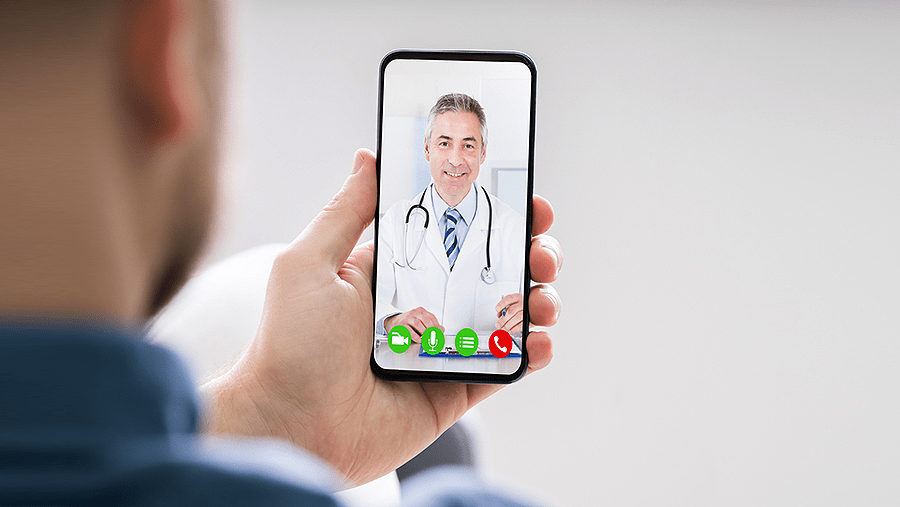Evolving Role of Software in Patient Experience
Contents:
-
Introduction
-
Remote healthcare experiences
-
Wearable health monitors
-
Administrative efficiency
-
Impact of software evolution on paramedics
-
Software evolution and efficiency in the healthcare system
-
Reduced costs of operations
-
Pros of software evolution in patient experience
-
Relevance in today’s world
-
Facts and figures

Introduction
The health industry today is becoming more user centric. It largely relies on the patient’s perception about the treatment, healthcare standards, staff, hospital, etc. This solely means that the industry is now more consumer driven than ever before.
The digital era has made everything possible (well, almost everything). Consumers can now do a google search to find reviews about a specific institute or doctor hence this largely shapes the turnout of healthcare institutions.
This brings us to the verdict that patience experience is extremely significant and medical professionals should priorities it. It is a lot more relevant in today’s world as compared to the past.
Patient experience can be defined as the consumer’s level of satisfaction with the treatment and the entire medical experience. This includes the professionals, institutions, behavior, quality of treatment, and patient care.
In order for healthcare institutions to gain the ideal patient experience, they need to be in touch with the latest tactics required for a good patient experience. This has been made easier with the role of technology in the healthcare industry.
In any case, the move towards a more strong and user centric healthcare system will likewise require a more vital utilization of technology to improve the general patient experience. The institutes best situated to flourish in the present medical services are those that successfully coordinate usage of technology into both their patient commitment technique and operational structure.
This essentially means that in order to utilize technology effectively, organizations need to mould their administrative processes along with clinical processes in line with the latest technology and softwares.
There are agencies and software specialist companies that design custom built softwares for healthcare institutions. These custom built softwares are a great start to boost the administrative and management skills of a healthcare institution. Moreover, these softwares ensure efficiency in regard to the treatment provided. This at the end results in a better patient experience.
Below mentioned are a few instances and situations that show the impact of technology on patience experience. These situations will also demonstrate the evolution in terms of patient experience that is a result of technology and software developments.
Introduction
The health industry today is becoming more user centric. It largely relies on the patient’s perception about the treatment, healthcare standards, staff, hospital, etc. This solely means that the industry is now more consumer driven than ever before.
The digital era has made everything possible (well, almost everything). Consumers can now do a google search to find reviews about a specific institute or doctor hence this largely shapes the turnout of healthcare institutions.
This brings us to the verdict that patience experience is extremely significant and medical professionals should priorities it. It is a lot more relevant in today’s world as compared to the past.
Patient experience can be defined as the consumer’s level of satisfaction with the treatment and the entire medical experience. This includes the professionals, institutions, behavior, quality of treatment, and patient care.
In order for healthcare institutions to gain the ideal patient experience, they need to be in touch with the latest tactics required for a good patient experience. This has been made easier with the role of technology in the healthcare industry.
In any case, the move towards a more strong and user centric healthcare system will likewise require a more vital utilization of technology to improve the general patient experience. The institutes best situated to flourish in the present medical services are those that successfully coordinate usage of technology into both their patient commitment technique and operational structure.
This essentially means that in order to utilize technology effectively, organizations need to mould their administrative processes along with clinical processes in line with the latest technology and softwares.
There are agencies and software specialist companies that design custom built softwares for healthcare institutions. These custom built softwares are a great start to boost the administrative and management skills of a healthcare institution. Moreover, these softwares ensure efficiency in regard to the treatment provided. This at the end results in a better patient experience.
Below mentioned are a few instances and situations that show the impact of technology on patience experience. These situations will also demonstrate the evolution in terms of patient experience that is a result of technology and software developments.
Remote healthcare experiences
This digital era has made communication between healthcare professionals and patients extremely easy. They are now connected through emails, WhatsApp, telephones, and the list goes on. Another thing that is a result of this technical evolution is remote healthcare checkups. General checkups are now being conducted through online mediums, be it a session of therapy or be it a routine checkup, technology to the rescue. Moreover, medical professionals now can make their own channels and platforms to battle any communication gap between their patients. This also increases awareness as well as makes an effective use of technology. Another outcome of this are virtual healthcare practices. They refer to meetings between patients and doctors through digital technology remotely. As technology evolves, more serious diagnoses fall under virtual medical practices. Moreover, telehealth solutions are also now possible. Medical services and solutions are now digitally distributed with the help of technology. It is the delivery of health facilitation – medical care, health education, etc. with the usage of telecommunication. Not to forget, technology has aided in making this procedure more cost effective as well. Remote check ups will save costs on both ends. Teleconferencing has also made it possible to commute despite any geographical borders.
Wearable health monitors
Humans can now wear monitors and devices that are directly synced to their health and body. An example of this is the trending Fitbit used in workouts and otherwise. These also include wearable fitness trackers that can track a patient’s blood pressure, heart rate, and so on. These things on the whole contribute to a better patient experience because of their efficient and user friendly nature. Moreover, there are now wearable ECG monitors that can make communication between a patient and a doctor more digital friendly and efficient. It measures an electron diagram and you can then send the reading to your doctor. The market of wearable health technology is saturating and users get to see new advancements everyday. These add on to the convenience of patients as well as the paramedical staff.
Administrative efficiency
Software evolution in the healthcare sector has definitely impacted their administrative abilities and performance. There are softwares designed and custom made for clinics and health professionals that track patient records, diagnostics, and appointments. These measures contribute in making patient experience efficient as well as accurate. Gone are the times when the paramedic staff had to call up patients and remind them for their appointments. These softwares allow for a seamless procedure and automated technical appointment reminders. Web applications are also used now to set appointments and give reminders. Moreover, it has also made it easier for the health professionals since they can now access patient history and record without any hassle and without digging up in clusters of old files and prescriptions. This administrative evolution and custom built softwares in the healthcare sector has definitely shaped patient experience in a positive way. It provides a good degree of patient satisfaction as well as ensures a seamless medical procedure.
Impact of software evolution on paramedics
Technology and evolution in the said sector has definitely aided the paramedics and contributed to their efficiency in multiple ways. In cases of emergencies, paramedics are now provided with vehicles and portable devices that are affiliated with GPS and softwares that help in notifying them about emergency situations. Moreover, these inbuilt softwares help determine the fastest and most optimal routes along with traffic indications to ensure that healthcare professionals reach emergency situations just in time efficiently. Furthermore, they also help in monitoring the performances of the paramedic staff for example their speed limit and start off times. These facilities help in making administration of healthcare professionals easier and efficient at the same time.
Software evolution and efficiency in the healthcare system
This goes without saying because modernization definitely increases efficiency. Once clinics and their operations go digital, it will not only reduce errors but will also increase the efficiency of the procedures. Appointments, diagnostics, and records management will become paperless and effortless. This will ensure that the data and records are now much more secure and safe. Not only this, it will also ensure that the patient experience is top notch since they will no longer have to wait and go through lengthy procedures of getting an appointment or filing their previous medical reports. Gone are the days when the delivery of healthcare was restricted to a four wall hospital only. The technical evolution in the healthcare sector has definitely revamped the quality of care and the speed of delivery in hospitals. The treatment is given much more accurately and efficiently as a result of the modernization.
Reduced costs of operations
Once clinics and professionals are going through the evolution of having custom built softwares for their sectors, it will decrease and eliminate the role of hardwork and reduce manual labor staff. Most work that was previously done by manual labor will now be conducted by digital machines and softwares hence there shall be a reduction in the costs of hiring manual staff. Moreover, the maintenance of digital softwares is much less than paying staff regularly and maintaining hardware and hardcopies of patient records and administrative data. Therefore, another advantage of this evolution would be a decrease in the operational as well as managerial cost of the health sector.
Pros of software evolution in patient experience
Below mentioned are a few evident pros of software evolution in patient experience. It has definitely aided both; the healthcare sector as well as the patients and users.
- Reduced costs of operations and procedures due to a digital administrative process.
- An improved and efficient customer care because of a digital healthcare system that results in a better patient experience.
- Lower risks of violating confidential reports and records of patients as well as important documents and data of the healthcare institute.
- Better aided clinical research activities that result in better treatment and diagnosis of patients. It helps them stay in touch with the trends.
- An improved and professional delivery of treatment from the paramedic staff due to training and digital research exposure.
The above mentioned advantages of evolution in patient experience are a result of modernization and they have helped in bringing a technical evolution as well as improve the quality of treatment given to consumers.
Relevance in today’s world
Consumers around the globe are now more concerned about the treatment procedures and the behavioural treatment of the paramedic staff towards them. This is a change and this has caused healthcare institutions to prioritise patient experience on the top. The perception of patients regarding the hospitals also known as patient experience ultimately determines the revenue and outcome of hospitals and medical professionals today because of a more user centric environment. In order for healthcare institutions to stay in the competitive market, they now not only need to focus on the quality of treatment, but they also need to ensure that their patients are satisfied since that is now largely shaping perceptions of consumers.
Facts and figures
The Hospital Advisory Board estimates that, on average, patient perception and experience of treatment and medical institutions accounts for a total of $4 million annual income per hospital. The Center for Medicare and Medicaid Studies looks only at government-funded treatment, they stated that of the $1.5 billion reimbursed in the 2016 fiscal year, $450 million was directly tied to patient experience and perception of care and medical institutions. The above mentioned stats are self sufficient in explaining the relevance of patient experience today and the impact of software evolution on the revenues of healthcare institutions. Focusing on patient experience will allow healthcare institutions and professionals to improve the patients’ perception of clinics and paramedics, improve outcomes and revenues, and set a standard that cannot be matched. Sustainable long-term maintenance and attention to patients; both during and after the treatment will create an emphasis on their experience that they will want to talk about. This brings us to the end. The role of custom built software’s and modernization has evolved the healthcare industry. Patience experience is now a priority. It has also encouraged them to improve their delivery of care and treatment towards patients since their perception determines their revenue and outcome. Moreover, this has also contributed towards a more user centered approach and a user centric society.








